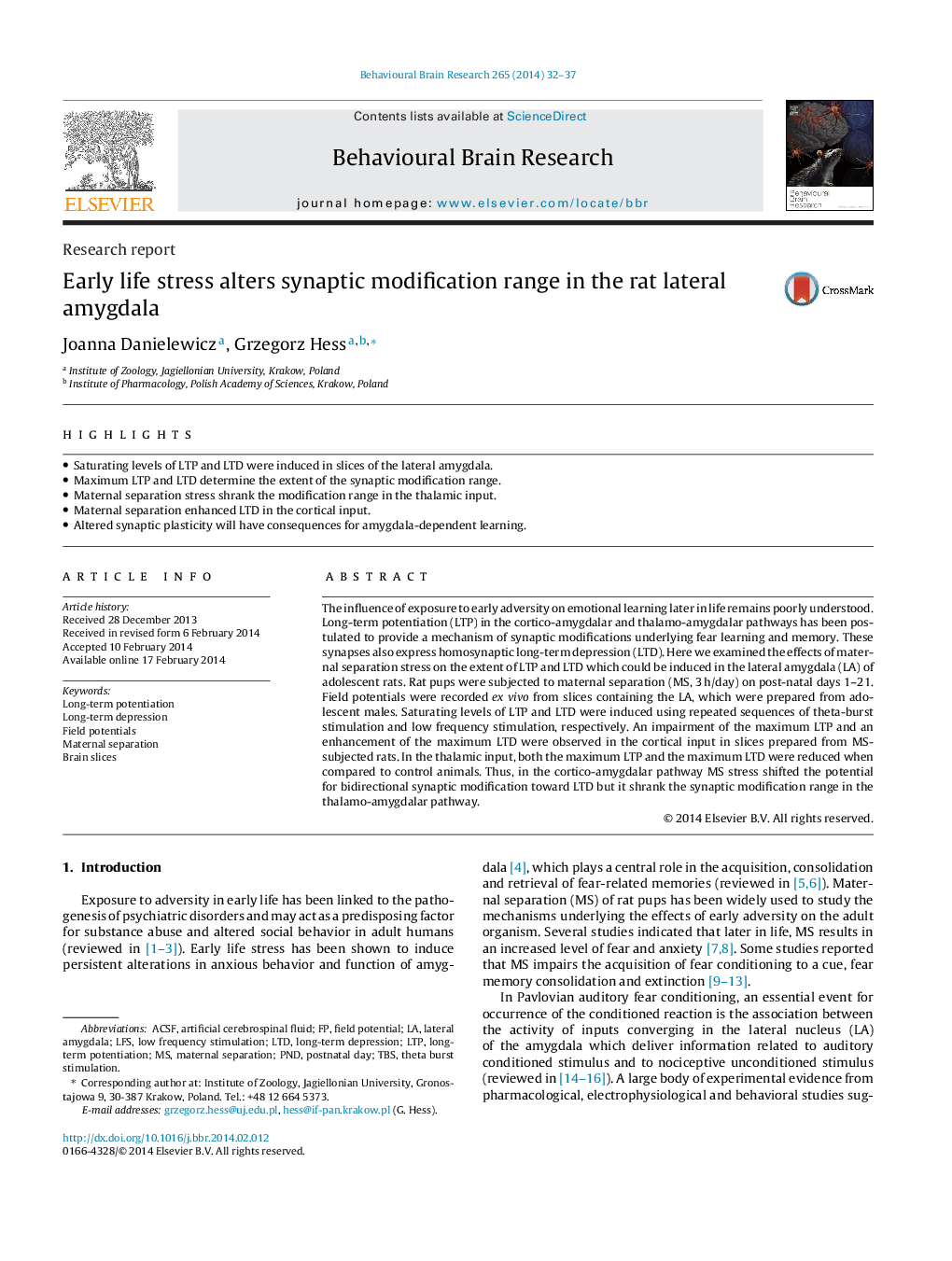| Article ID | Journal | Published Year | Pages | File Type |
|---|---|---|---|---|
| 6258284 | Behavioural Brain Research | 2014 | 6 Pages |
â¢Saturating levels of LTP and LTD were induced in slices of the lateral amygdala.â¢Maximum LTP and LTD determine the extent of the synaptic modification range.â¢Maternal separation stress shrank the modification range in the thalamic input.â¢Maternal separation enhanced LTD in the cortical input.â¢Altered synaptic plasticity will have consequences for amygdala-dependent learning.
The influence of exposure to early adversity on emotional learning later in life remains poorly understood. Long-term potentiation (LTP) in the cortico-amygdalar and thalamo-amygdalar pathways has been postulated to provide a mechanism of synaptic modifications underlying fear learning and memory. These synapses also express homosynaptic long-term depression (LTD). Here we examined the effects of maternal separation stress on the extent of LTP and LTD which could be induced in the lateral amygdala (LA) of adolescent rats. Rat pups were subjected to maternal separation (MS, 3Â h/day) on post-natal days 1-21. Field potentials were recorded ex vivo from slices containing the LA, which were prepared from adolescent males. Saturating levels of LTP and LTD were induced using repeated sequences of theta-burst stimulation and low frequency stimulation, respectively. An impairment of the maximum LTP and an enhancement of the maximum LTD were observed in the cortical input in slices prepared from MS-subjected rats. In the thalamic input, both the maximum LTP and the maximum LTD were reduced when compared to control animals. Thus, in the cortico-amygdalar pathway MS stress shifted the potential for bidirectional synaptic modification toward LTD but it shrank the synaptic modification range in the thalamo-amygdalar pathway.
